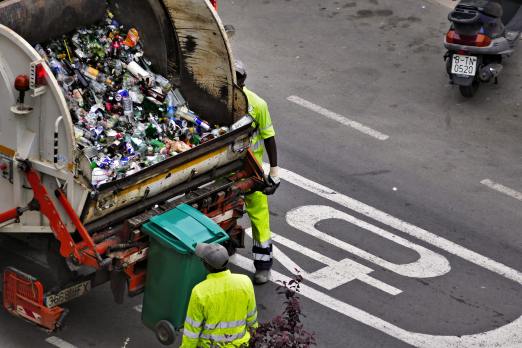
Understanding the impacts of greenhouse gases is one of the most popular scientific subjects of the past decade. As an organization, We Don’t Waste frequently compares our food recovery efforts to emissions saved.
So what is methane? Known as a “super-polluter”, methane is a potent greenhouse gas. Greenhouse gases trap heat in the atmosphere and cause the overall average temperature of the planet to rise. There are several greenhouse gases, carbon dioxide (CO2), methane (CH4), nitrous Oxide (N20), and fluorinated gases.
Many of these gases can be released by natural processes, and will continue to do so in a healthy ecosystem. What is concerning is that an estimated 60% of the greenhouse gases in our atmosphere are caused by human activities and are too rapidly increasing the quantity and density of these gases. The rate at which human activity produces these harmful gases is also expected to increase unless conscious action is taken to prevent it.
Methane makes up approximately 10% of the amount of greenhouse gas in the atmosphere emitted by human activity, but the impact it has on the atmosphere ranges between 25 times to 86 times worse than carbon dioxide. This is because the chemical shape of methane makes it incredibly good at trapping heat.
The gas only lasts in the atmosphere for about 12 years, just a tenth of the time of carbon dioxide, but wreaks havoc while resting in the ozone. This is how methane earns it nickname, “super-polluter.”
Cutting methane emissions by nearly half within the next decade would prevent a 0.3°C rise in the average global temperature by the 2040s. This would be a necessary step in order to meet the Paris Climate agreement which aims to keep the global increase in temperature below 1.5°C.
There are a few different ways that the gas is produced. Methane is produced in the agriculture sector as a byproduct of livestock farming, from energy and industry, and from waste that is created by homes and businesses. Waste from homes and businesses makes up the third largest source of methane emissions (created by humans), so this is where we as consumers can make the most impact.
When households and businesses discard food, the organic material rots in municipal landfills and releases methane. We can change this!

We can also advocate for industry to change and become greener. The agriculture industry can work on reducing emissions by reworking the diet of the animals through anaerobic digestion, capturing the methane as it is released, and making changes to the manure collection and disposal systems. Cows themselves makeup about 40% of all methane in the atmosphere and the increasing demand for cow products means there will be even more burps and releases. Similarly, energy and industry standards for emissions are also being scrutinized and can be made “greener.”
There are a few ways you can help at home. Check out our blog on how you can reduce waste in your household. If you can decrease the amount of waste produced by your own household it will help decrease the methane produced in your local municipal landfill, which will directly improve the air quality in your area! As you learn to integrate these habits, share the news. Your understanding of the issue is twice as effective when you share it with a friend that can help you fight climate change.
The 1.5 degrees Celsius goal is important as the data suggests that this is the cutoff before there is serious, irreversible damage done. With climate change, comes major ecological shifts, most likely resulting in a disruption of food production and major agricultural repercussions.
Populations that are already at-risk or effected by food insecurity will likely experience the brunt of the challenges caused by climate change. It is our collective responsibility to make sure that we can reduce the damage by reducing our food waste and valuing the nutritious food we produce.










